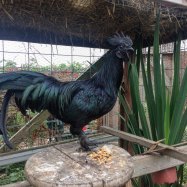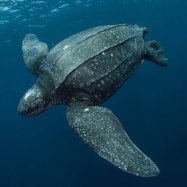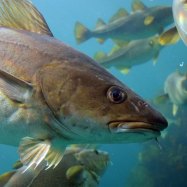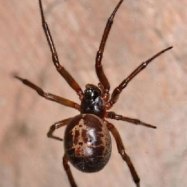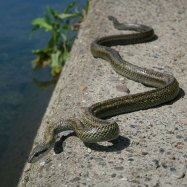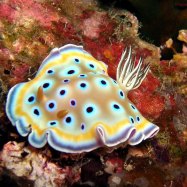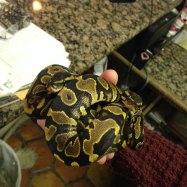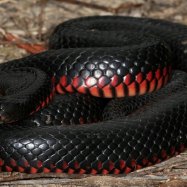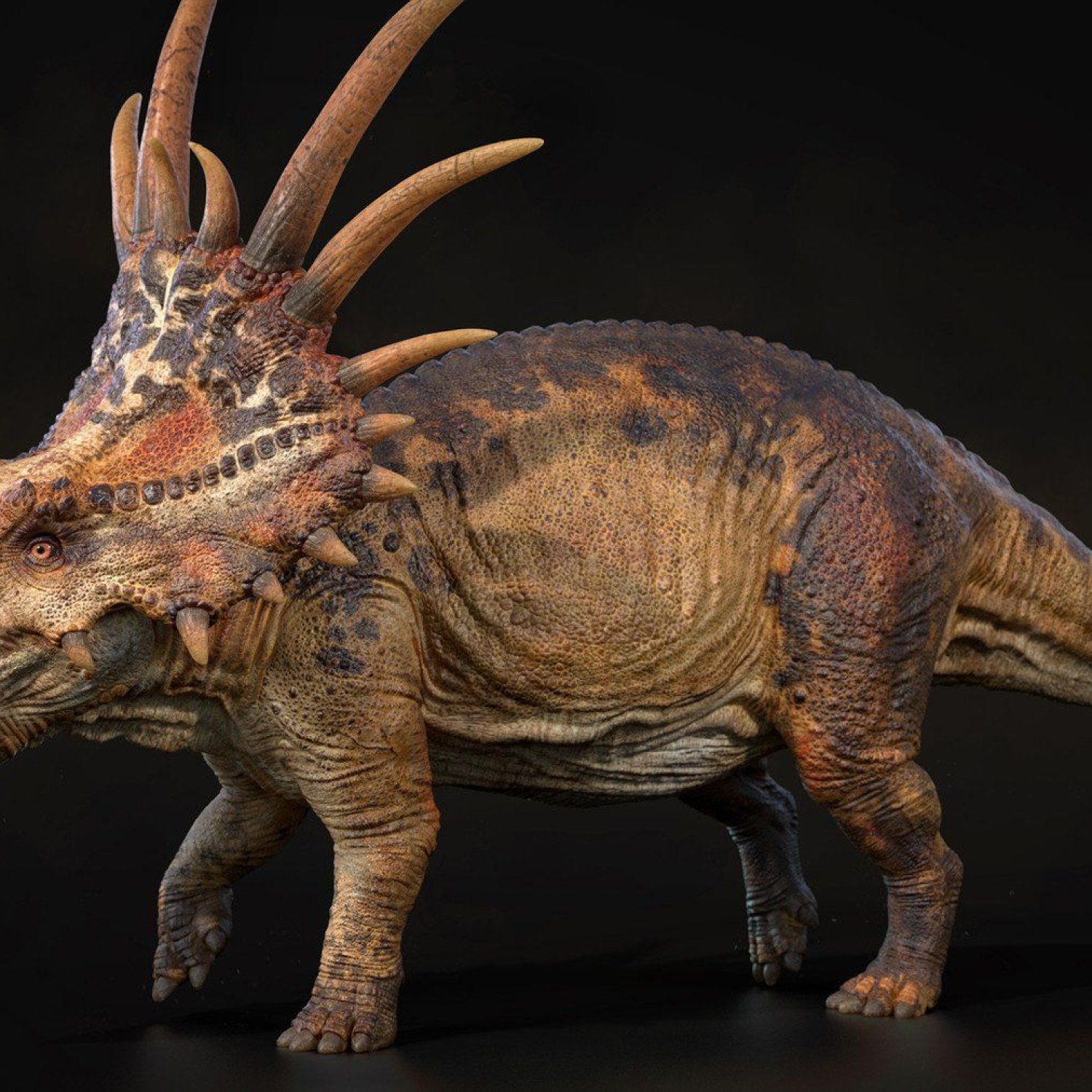
Styracosaurus
Approximately 5.5 meters (18 feet)
The Styracosaurus, a member of the Ceratopsidae family, was a large quadrupedal dinosaur that roamed the Alberta, Canada area approximately 5.5 meters (18 feet) long. Its name translates to spiked lizard due to the distinctive spikes protruding from its frill. This fascinating creature lived during the late Cretaceous period and is considered to be one of the most well-known ceratopsian dinosaurs. Visit Alberta to see its fossils for yourself! #Styracosaurus #Ceratopsidae #Alberta #dinosaurfacts
Animal Details Summary:
Common Name: Styracosaurus
Kingdom: Animalia
Habitat: Grasslands, forests, and open woodlands
Exploring the Fascinating World of Styracosaurus: The Spiked King of Herbivores
There’s something truly awe-inspiring about the world of prehistoric creatures. These magnificent animals, roaming the Earth millions of years ago, continue to fascinate us with their unique and often terrifying features. And among these ancient beasts, there is one that stands out for its sheer size and ferocity – the Styracosaurus.Styracosaurus (Styracosaurus albertensis) is a dinosaur species that belongs to the family Ceratopsidae, which includes other famous horned dinosaurs like Triceratops Styracosaurus. This animal lived during the Late Cretaceous period, around 75-80 million years ago, in what is now known as North America. Its name, which means “spiked lizard”, refers to the prominent spikes on its frill, making it a fearsome sight to behold.
But what sets this animal apart from its counterparts? What makes it stand out in the crowded world of dinosaurs? Let’s take a deep dive into the fascinating world of Styracosaurus and uncover its unique features.
The Discovery of a Dinosaur King
The story of Styracosaurus begins in the year 1913 when a famous fossil hunter, Barnum Brown, discovered a partial skeleton of this animal in the badlands of Alberta, Canada. He named it Styracosaurus albertensis, after the region it was found. The first discovery only had a partial skull and some other bones, leading scientists to have a limited understanding of this dinosaur.It wasn’t until 1935 that a nearly complete skeleton of a Styracosaurus was unearthed, providing experts with a more comprehensive picture of this ancient creature. The discoveries continued, and today, we have numerous fossils that reveal a considerable amount of information about the anatomy and behavior of this fascinating dinosaur.
A Quadrupedal Giant with a Formidable Appearance
One of the most striking features of Styracosaurus is its size Scale Crested Pygmy Tyrant. As a ceratopsian dinosaur, it belongs to the family of large horned herbivores, making it a quadrupedal giant. It could grow up to 18 feet long, with an estimated weight of up to 6,600 pounds. That’s about the size of an African elephant!Its body shape was similar to other ceratopsians, with a stocky build and a large, curved beak. But what truly sets Styracosaurus apart is its frill – a bony structure at the back of its skull adorned with six long spikes, resembling a spiked collar. These spikes could reach up to two feet in length, making it a formidable sight to any predator.
Styracosaurus also had a unique feature that set it apart from other ceratopsians – a large nose horn. While most of its relatives had short horns, Styracosaurus had a longer, curved one, adding to its fierce appearance.
A Colorful Past
One might wonder what color Styracosaurus was, considering the sparse evidence of its pigmentation in fossilized skeletons. However, recent studies have shed some light on its coloration, giving us a glimpse into its colorful past.By examining the preserved collagen fibers in Styracosaurus' fossils, scientists have determined that it had a grayish-brown color with lighter underparts. This color was likely a result of melanin, the same pigment responsible for human skin color. Its horns, frill, and beak were most likely black or dark brown, adding to its imposing appearance.
The Life of a Styracosaurus
As a herbivorous dinosaur, Styracosaurus' main source of food was plants, and it had several adaptations to support this diet. Its beaked mouth was perfect for cropping and chewing vegetation, and its teeth had ridges that helped grind tough plant material. It also had a powerful jaw and neck muscles, allowing it to efficiently process its food.Styracosaurus lived in various habitats, including grasslands, forests, and open woodlands. Its fossils have been found in the present-day Canadian provinces of Alberta, Saskatchewan, and Montana. These areas were once part of a vast inland sea during the Late Cretaceous period, creating a diverse ecosystem for Styracosaurus and other dinosaurs to thrive.
As a large and imposing animal, Styracosaurus was a dominant species in its environment, and its size may have provided some protection against predators. However, it is believed that it may have also used its frill and horns for defense, as seen in other ceratopsians. The shape and size of its frill suggest that it may have also served as a display to attract mates or intimidate rivals.
The End of an Era
Despite its size and ferocious appearance, Styracosaurus, like many other dinosaurs, eventually met its end during the Cretaceous-Paleogene extinction event. This mass extinction, which occurred 65 million years ago, wiped out all non-avian dinosaurs, along with three-quarters of all plant and animal species on Earth.The cause of the extinction is still a topic of debate among scientists, with theories ranging from a giant asteroid impact to volcanic eruptions and climate change. Whatever the cause, it marked the end of an era for Styracosaurus and other dinosaurs, paving the way for the rise of mammals and birds.
A Fascinating Creature That Continues to Captivate Us
The discovery and study of Styracosaurus has provided us with a glimpse into the ancient world of dinosaurs. Its ferocious appearance, unique features, and impressive size continue to capture our imagination, making it a beloved creature in the world of paleontology.Thanks to advancements in technology and recent fossil discoveries, we continue to uncover more information about Styracosaurus and its relatives, giving us a better understanding of their behavior, habitat, and adaptations. And as we continue to delve into the mysteries of the past, we can only imagine what other wonders we may find waiting to be discovered.

Styracosaurus
Animal Details Styracosaurus - Scientific Name: Styracosaurus
- Category: Animals S
- Scientific Name: Styracosaurus
- Common Name: Styracosaurus
- Kingdom: Animalia
- Phylum: Chordata
- Class: Reptilia
- Order: Ornithischia
- Family: Ceratopsidae
- Habitat: Grasslands, forests, and open woodlands
- Feeding Method: Herbivorous
- Geographical Distribution: North America
- Country of Origin: Canada
- Location: Alberta, Canada
- Animal Coloration: Grayish-brown with lighter underparts
- Body Shape: Large, quadrupedal
- Length: Approximately 5.5 meters (18 feet)
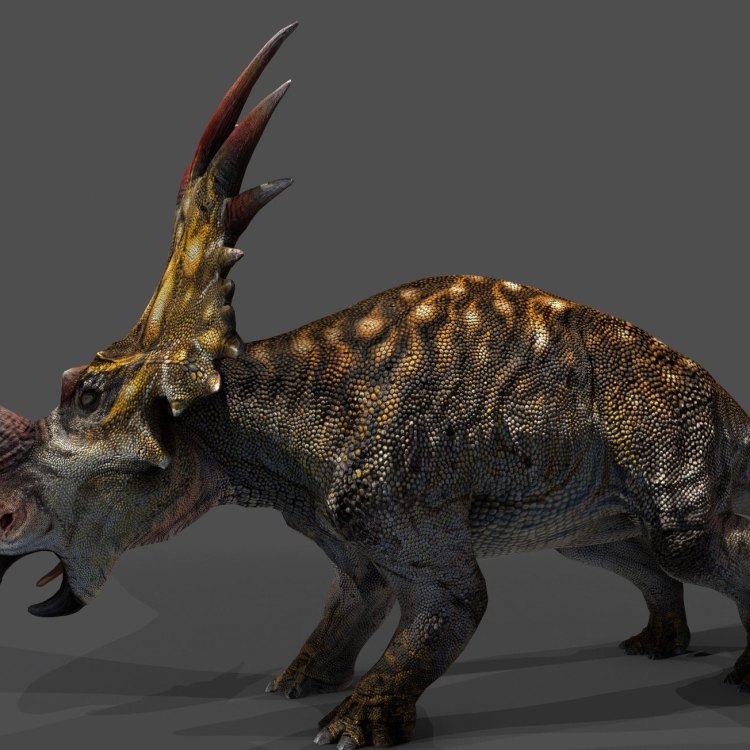
Styracosaurus
- Adult Size: Large
- Average Lifespan: Unknown
- Reproduction: Sexual
- Reproductive Behavior: Unknown
- Sound or Call: Unknown
- Migration Pattern: Unknown
- Social Groups: Unknown
- Behavior: Unknown
- Threats: Extinction due to environmental changes and overhunting
- Conservation Status: Extinct
- Impact on Ecosystem: Unknown
- Human Use: Fossil specimens are valuable for scientific research and education
- Distinctive Features: Large frill with long spikes, nasal horn, and smaller brow horns
- Interesting Facts: Styracosaurus lived during the Late Cretaceous period and is known for its impressive frill and horns. It was a herbivorous dinosaur and likely used its horns and frill for display and defense. Styracosaurus fossils have been found primarily in Alberta, Canada. Despite its unique appearance, much about its behavior and lifestyle remains unknown.
- Predator: Unknown
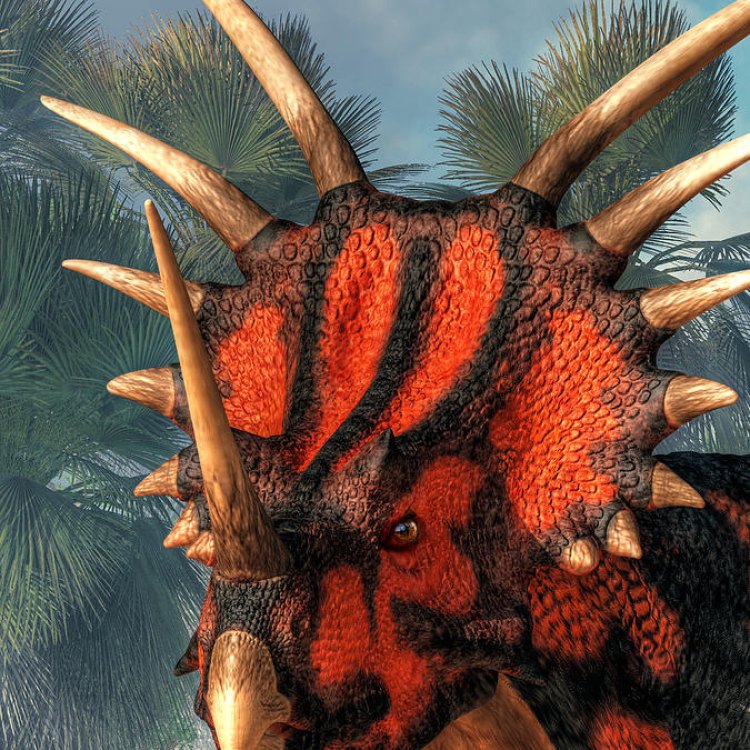
Styracosaurus
The Majestic Styracosaurus: Uncovering the Secrets of a Mysterious Dinosaur
The mighty dinosaurs that roamed the Earth millions of years ago have always fascinated us. These gentle giants have captured our imagination and continue to do so even though they have been extinct for millions of years. Among them, the Styracosaurus reigns as one of the most fascinating and mysterious creatures of the Late Cretaceous period.The Styracosaurus, meaning "spiked lizard," was a large herbivorous dinosaur that lived in what is now Canada and parts of the United States during the Late Cretaceous period, about 75 million years ago PeaceOfAnimals.Com. It was first discovered by a team of paleontologists in 1913 in Alberta, Canada, and ever since then, it has continued to captivate the minds of scientists and dinosaur enthusiasts alike.
This magnificent creature was a sight to behold, with an estimated adult size of over 18 feet in length and a weight of over 3 tons. However, despite its impressive size and distinctive features, surprisingly little is known about this dinosaur's behavior, lifestyle, and even its average lifespan.
The Life of a Styracosaurus
The elusive nature of the Styracosaurus has left many questions unanswered. For instance, we know that it was a sexual reptile, but the reproductive behavior and lifespan of this dinosaur remain a mystery. It is believed that they may have lived for several decades, but without concrete evidence, we can only speculate.One of the most intriguing mysteries surrounding the Styracosaurus is its reproductive behavior. Scientists have not been able to determine if these dinosaurs were solitary or lived in social groups, and there is no record of their mating or nesting habits. It is believed that they may have laid eggs, much like other dinosaurs, but no fossil evidence has been found to confirm this theory Smilosuchus.
Another intriguing aspect of the Styracosaurus is its sound or call. Just like modern-day animals, dinosaurs may have used vocalizations for a variety of reasons, such as communication, courtship, and warning signals. However, as no soft tissue has been preserved in fossils, we can only speculate on what kind of sounds this magnificent creature may have made.
The Mysterious Migration Pattern
Despite numerous studies and excavations, the migration pattern of the Styracosaurus remains unknown. Scientists have speculated that these dinosaurs may have migrated in search of food and favorable breeding grounds, just like some modern-day animals. However, without concrete evidence, the specifics of their migration patterns remain a mystery.Another possibility is that the Styracosaurus lived in a relatively small area and did not migrate at all. This would explain the abundance of fossils found in Alberta, Canada, suggesting that this may have been their primary habitat.
Behavior and Threats
As with many other dinosaurs, we can only make assumptions about the behavior and lifestyle of the Styracosaurus based on its physical characteristics and evidence from fossilized remains. It is believed that this dinosaur was a herbivore and used its distinct features for display and self-defense.The most notable feature of the Styracosaurus is its large frill adorned with long spikes, which stretched up to 60 centimeters in length. These bony spikes were most likely used for display, intimidating predators, and even for combat among rival Styracosaurus. Additionally, it had a nasal horn and smaller brow horns, which added to its impressive appearance and may have been used for protection against predators.
Unfortunately, the Styracosaurus and other dinosaurs of the Late Cretaceous period faced extinction due to significant environmental changes and overhunting by predators. These great beasts that once ruled the Earth could not adapt to the new conditions, and eventually, all dinosaur species, including the Styracosaurus, became extinct.
The Styracosaurus: A Valuable Asset for Science and Education
Despite its extinction, the Styracosaurus still has a significant impact on our lives today. Fossil specimens have proved to be a valuable asset for scientific research and education. By studying these fossils, scientists have been able to uncover more about this majestic dinosaur and the world in which it once roamed.The bony structures of the Styracosaurus, such as its frill and horns, have inspired artists and have been replicated in movies, books, and other forms of media. It has also become a favorite among children and adults alike, with many dinosaur enthusiasts collecting fossils, toys, and other memorabilia of this magnificent creature.
The Unique Features of the Styracosaurus
The Styracosaurus is a one-of-a-kind dinosaur, with features that set it apart from all others. Its large frill with long spikes, nasal horn, and smaller brow horns make it instantly recognizable and have captured the imagination of scientists and the public.However, its uniqueness goes beyond just its appearance. The Styracosaurus lived during the Late Cretaceous period, where it coexisted with other notable dinosaurs such as the famous tyrannosaurus rex, triceratops, and ankylosaurus. Its distinctive features and behavior make it stand out from its counterparts, and its mysterious nature continues to intrigue us even today.
The Enduring Mystery of the Styracosaurus
The Styracosaurus remains a mystery, with much of its behavior, lifestyle, and even its migration patterns remaining unknown. However, this only adds to its allure, making it a captivating topic for research and study. As scientists continue to excavate and analyze fossils, we may soon discover more about this elusive and fascinating dinosaur.In a world that never fails to amaze us, the Styracosaurus reminds us of the incredible creatures that once roamed our planet. Its impressive size, unique appearance, and mysterious nature make it a symbol of the lost world of dinosaurs and continue to capture our imagination. The Styracosaurus will always remain a remarkable relic of the past, reminding us of the magnificence and diversity of life on Earth.
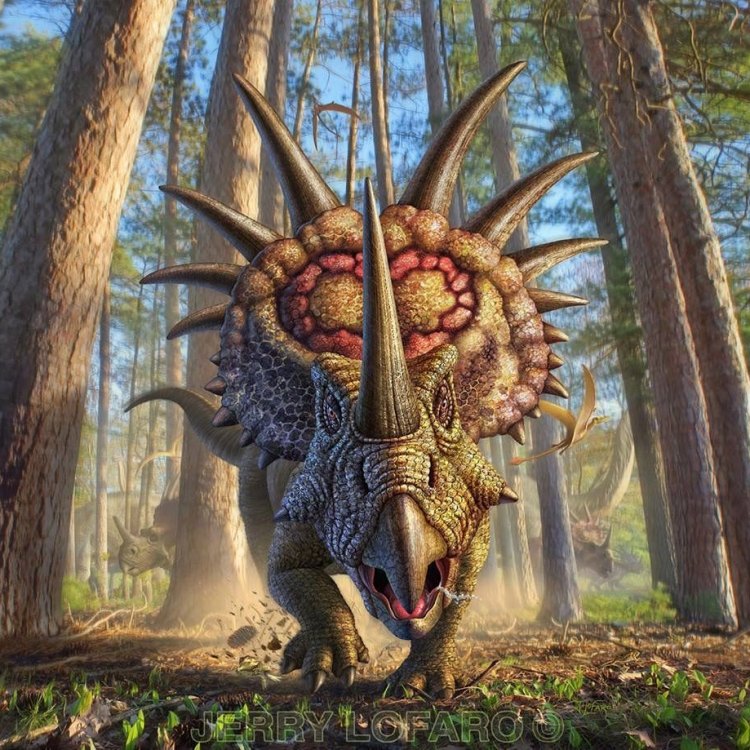
Exploring the Fascinating World of Styracosaurus: The Spiked King of Herbivores
Disclaimer: The content provided is for informational purposes only. We cannot guarantee the accuracy of the information on this page 100%. All information provided here may change without prior notice.


